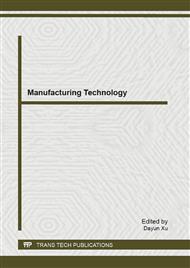p.297
p.302
p.308
p.315
p.321
p.325
p.331
p.335
p.339
Analysis on Influence Coefficient of Workspace about a Configuration Palletizing Robot
Abstract:
A Case Study of IRB460 configuration palletizing robot of ABB. On one hand, we use D-H method to set up its kinematics model, and adopt numerical method to get its three-dimensional workspace maps and coordinate plane projection maps by using Matlab programming. On the other hand, this paper introduces the concept of workspace influence coefficient, which provides an important basis for the optimized design of its structure, to discuss in detail and make a quantitative analysis of the influence degree and influence trend caused by the change of rod length and angle parameters.
Info:
Periodical:
Pages:
321-324
Citation:
Online since:
December 2012
Authors:
Keywords:
Price:
Сopyright:
© 2013 Trans Tech Publications Ltd. All Rights Reserved
Share:
Citation:


